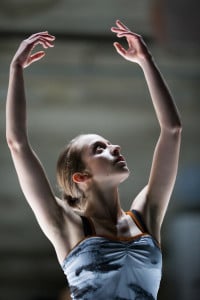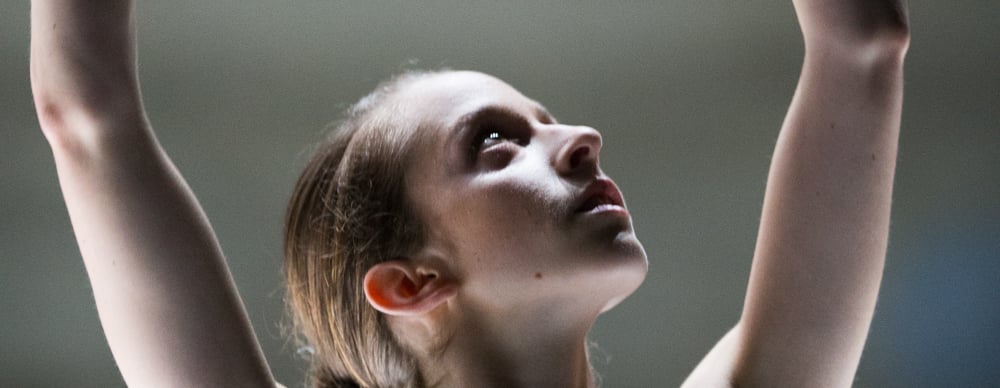
A calming moisture levitated in the cool air last Friday evening as I locked up my wet bike and headed towards the side entrance of Memorial Auditorium. I walked up a small set of stairs and through a set of large wooden doors into a small room packed with people, all waiting expectantly for the doors to open to the Theater and Performance Studies (TAPS) performance of Swan Lake Recalibrated, as choreographed by Alex Ketley.
Eyes darted and heads turned as the entrance to the performance space was unsealed. Those who had not already positioned themselves as close to the doors as possible quickly rose and made their way in to claim the best seat they could find on two sets of risers that hugged the edge of a large white square within which the dancers would soon perform. A long, amorphous, but roughly rectangular projection screen hung above the stage, resembling a small cloud or a large piece of crumpled up paper someone had tried to spread back out.
As audience members streamed in, a solitary dancer made slow, concentrated movements across the floor. Her leg muscles rippled under the pressure of her slowly shifting weight; her brow furrowed in concert with a form of transcendent meditation. She was a million miles away from the chattering crowd members, some of whom were still finding their seats.
After everyone had found a spot, a soft hush fell over the crowd. The lone dancer continued her gradual flow from form to form. Now, however, the audience joined her in her trance. Our gazes focused on her, unifying us all through empathy and attention. Seemingly millions of miles away from the crowded room where we had made small talk only minutes ago, we were joined by a larger group of dancers, and the performance began.
Abstract projections of colorful light appeared on the suspended screen. The performers synced in and out of corporeal patterns stirring up waves of proprioceptive sensation that I’d never felt before. At times it was as though I was being washed, cleansed by the flowing forms whose seeming weightlessness belied the physical strain that created them. At others, I was pulled out of the perception of my own body by a riptide of intense, quick and almost violent poses. These overpowering moments were a welcome destruction of the self, allowing the calmer moments to provide a sense of serene levitation.
At just under an hour, the performance went by in a heartbeat. Afterward, I laughed at myself for wanting to get the best seat possible— for even thinking I could identify the best seat. I got the sense that I would have felt the same extraordinary transformations with my eyes closed.
Outside, the vapor in the air had condensed into gently falling raindrops. My hand rose without my willing it and wiped the tiny specks of moisture off the seat of my bike. I unlocked the vessel from its mooring, slowly lifted my leg over the frame, and between the pedaling that pushed my bike and I through the sea of softly descending droplets, glided all the way home.
Contact Sean Christofferson at sechris “at” stanford.edu.
